
How to bleed air from a car's cooling system
Content
Many car owners are aware of the importance of the cooling system, but not everyone knows the reason for the rapidly rising temperature or incorrect operation of the stove, although in most cases it is the only one - the airiness of the system.
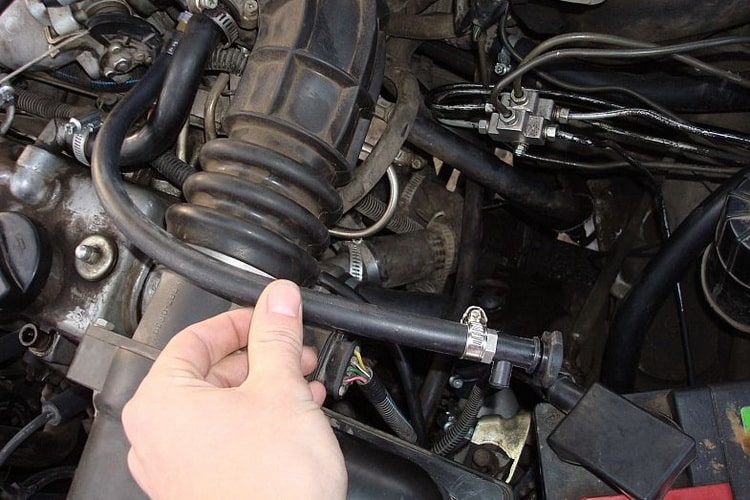
The reason for the appearance of an air lock in the cooling system
The cooling systems of modern vehicles are designed for stable high pressure in them (up to 100 kPa). This design makes it possible to increase the boiling point of the liquid to 120-125 degrees.
However, such a temperature range and effective cooling of the motor is possible only when the system is fully operational. One of the most common problems in the cooling system is the occurrence of plugs from the air.
The main causes of air pockets include:
- air ingress through leaky joints of branch pipes, hoses, tubes due to pressure changes that occur during the movement of the working fluid of the cooling system, which lead to air being drawn in through loosely fixed joints;
- air injection when using a wide-mouth funnel, while in the process of adding liquid, its flow does not allow gas to escape, trapping it in the tank;
- increased wear of individual parts of the water pump (fibers, gaskets and seals), through cracks and cracks in which air can be sucked in;
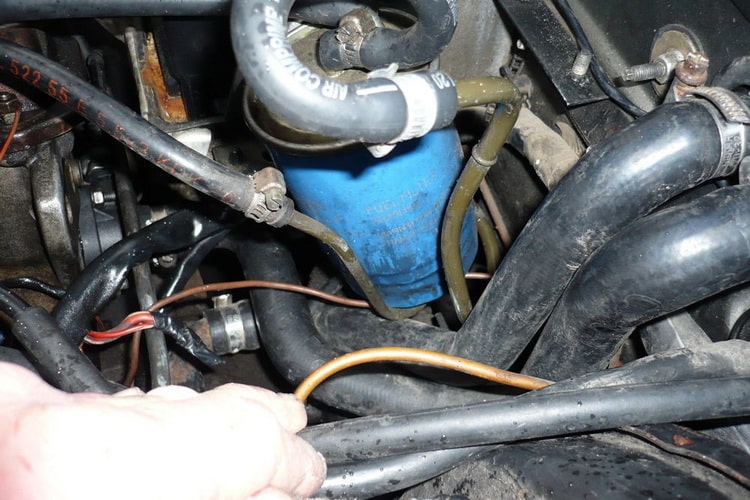
- leakage of coolant through pipes, heater and cooling radiators, hoses, which causes a decrease in the level of antifreeze and filling the vacated space in the expansion tank with air;
- violation of the patency of the channels in the radiator, which causes a violation of cooling and the appearance of air bubbles;
- malfunction of the excess pressure relief valve in the expansion tank cap, which leads to air being sucked in and impossible to discharge it through the same valve;
- damage to the cylinder head gasket, leading to coolant entering the oil through the crankcase (a sign - an increase in the oil level and a change in its color) or into the exhaust system (the smoke from the muffler becomes white), which causes a decrease in the amount of antifreeze and filling the free space with air.
Signs or symptoms of a choked engine cooling system
Air in the cooling system can cause serious engine problems. To avoid this, you should be aware of the obvious symptoms when air appears in the cooling system.
Signs of airiness:
- overheating of the internal combustion engine, which is expressed in a rapid increase in the temperature of the antifreeze and the movement of the pointer to the overheating zone (red scale) or moving into it (or the ignition of a special icon on the dashboard), as there are violations in the circulation of antifreeze through the system, leading to a noticeable decrease in cooling efficiency;
- the air from the heating system comes out cold or slightly warm, as air bubbles interfere with the movement of the working fluid through the system.
When such symptoms appear, urgent measures must be taken to avoid overheating of the internal combustion engine and an early or immediate overhaul after exceeding the recommended engine temperature range.
First of all, with the engine running, you should check the fastening of pipes, hoses and pipes for tightness, it is often enough to tighten the clamps to eliminate air leakage. It is necessary to carefully inspect the condition of the pipes and tubes made of rubber, if they are damaged, they should be replaced.
When the internal combustion engine is running, the thermostat responsible for opening / closing an additional circle of engine cooling is subjected to increased load. If, after starting the internal combustion engine, it heats up very quickly and the cooling radiator fan turns on almost immediately and the temperature indicator rapidly moves to the red zone (overheating), then this may mean either the thermostat is stuck in the closed position or the presence of air in the pump pipe.
In the reverse situation, when the engine warms up very slowly, the regulator may jam in the open state or the presence of an air lock in it.
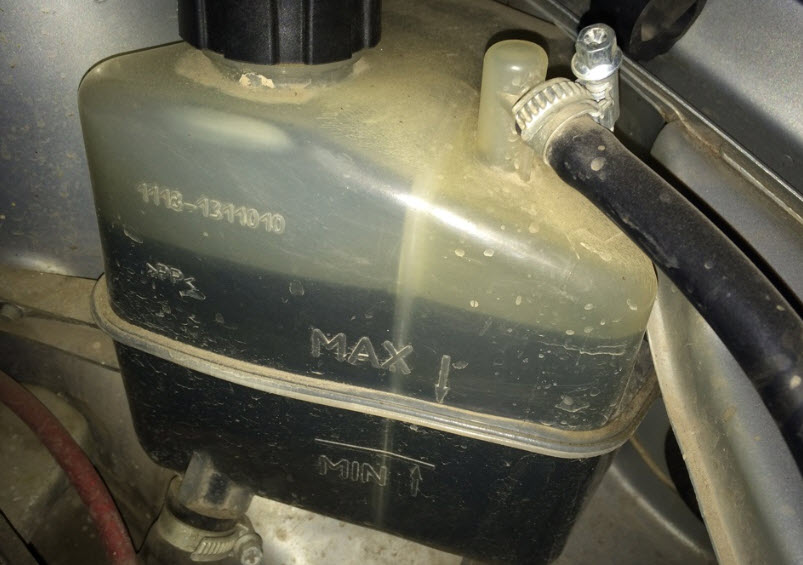

It is easy to check the thermostat for serviceability - for this you need to start the car and wait for the temperature gauge to start moving, and then gently feel the pipes. When the regulator is working, the nozzle at the top warms up quickly, while the bottom one remains cool.
After opening the thermostat (85-95 degrees, depending on the model of the machine), the lower pipe should warm up - with a working thermostat. The performance of the water pump should be checked by the noise level, the absence of coolant leaks on the stuffing box and the absence of vibration in the pump (bearing).
How to bleed air from the cooling system - all ways
On many models of vehicles, getting rid of an air lock in the coolant system is quite easy and even a non-professional can do it, which will save a significant amount.
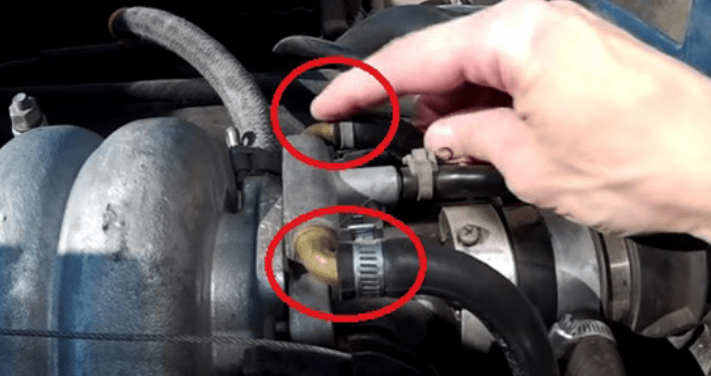

There are three methods for bleeding air with your own hands:
1) It is necessary to put the machine on a flat plane and dismantle the top protection from the motor. In many models, the throttle assembly is the highest point in the cooling system.
If, during a visual inspection on a specific model of vehicle, the same feature turns out, then to bleed the air, it is necessary to remove the antifreeze supply pipe from the throttle assembly by loosening the clamp with a Phillips screwdriver, it will not be superfluous to open the stove switch to the hottest mode (this procedure is especially relevant for VAZs ).
Then you should unscrew the cap from the expansion tank and close the hole with a clean cloth and start blowing air into the tank with your mouth until coolant starts to pour out of the pipe, which will mean the removal of the plug. Then you should fix the pipe and tighten the cover.
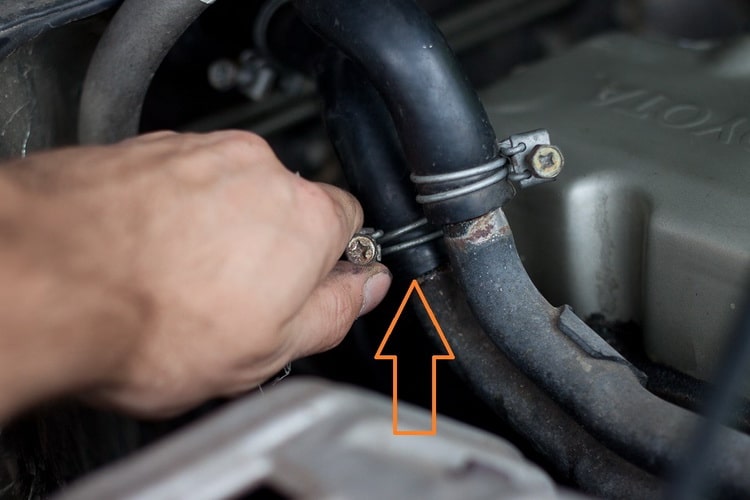

2) Pre-warm up the internal combustion engine for 10-20 minutes (depending on the outside temperature). Then you should unscrew the cap from the expansion tank and remove the antifreeze supply pipe from the throttle module.
After the coolant begins to flow from the pipe, it should be returned to its place, carefully fixing the clamp. When carrying out this procedure, it is necessary to avoid contact with the working fluid on the skin and clothing to avoid burns.
3) It is necessary to put the vehicle on the handbrake on an inclined surface (with the front part on the rise), additional stops under the wheels will not be superfluous.
Next, start the engine and let it run for 10-20 minutes to heat the coolant and open the thermostat. Then carefully, so as not to burn yourself, you should remove the cap from the expansion tank and radiator.
During this procedure, you should regularly gently depress the accelerator pedal and add antifreeze (antifreeze), it will not be superfluous to turn on the stove to the hottest mode to bleed air from the heating system.
The exit of the plug will be manifested by the appearance of bubbles, after their complete disappearance and / or the appearance of very hot air from the heating system, you can turn off the engine and return the covers to their place, as this will mean complete removal of air from the cooling system.
This method is not always effective, as some design features may not allow this procedure to be performed. This method is most effective on old cars, including VAZs.
Self-bleeding of air is based on elementary physical laws - air is a gas, and gas is lighter than a liquid, and additional procedures increase the pressure in the system, speeding up the flow of liquid and air removal.
Recommendations for prevention
It is much easier to avoid the appearance of air in the cooling system than to eliminate the causes of overheating of the motor later.
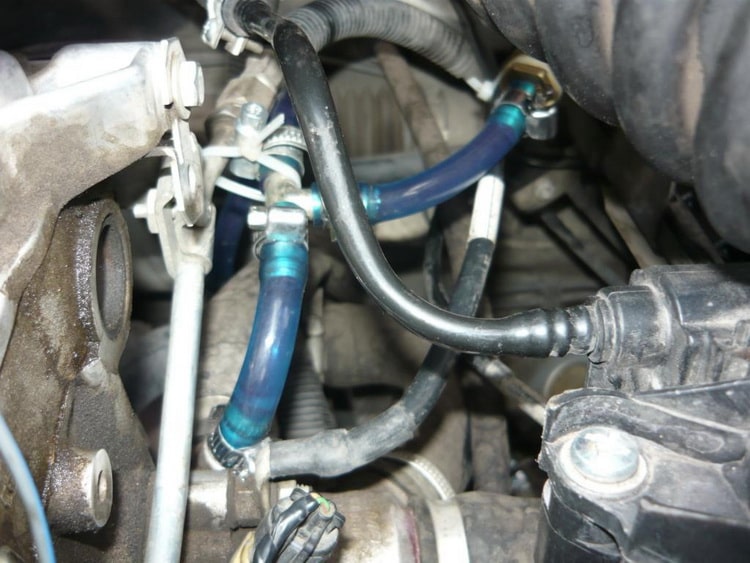

To do this, you must follow the simplest recommendations:
- pour antifreeze into the expansion tank in a thin stream without using a wide funnel;
- periodically conduct a visual inspection of the pipes, hoses and their attachment points for tightness and damage, if any, replace the damaged element;
- regularly change the cooling system pump according to the manufacturer's requirements;
- constantly monitor the level of the working fluid in the tank and, if necessary, immediately top it up;
- check the oil level and if it increases, it is urgent to carry out diagnostics, as this most likely means damage to the cylinder head gasket.
If symptoms of airiness occur, they can be easily eliminated by replacing worn parts and venting the gas with simple methods that are feasible even for a novice driver in terms of complexity.


Watch this video on YouTube
The formation of air in the cooling system and, as a result, overheating of the motor is easy to prevent by conducting a periodic inspection of the state of the system, adding antifreeze in a timely manner and, in accordance with the manufacturer's regulations, replacing the water pump and damaged parts.
